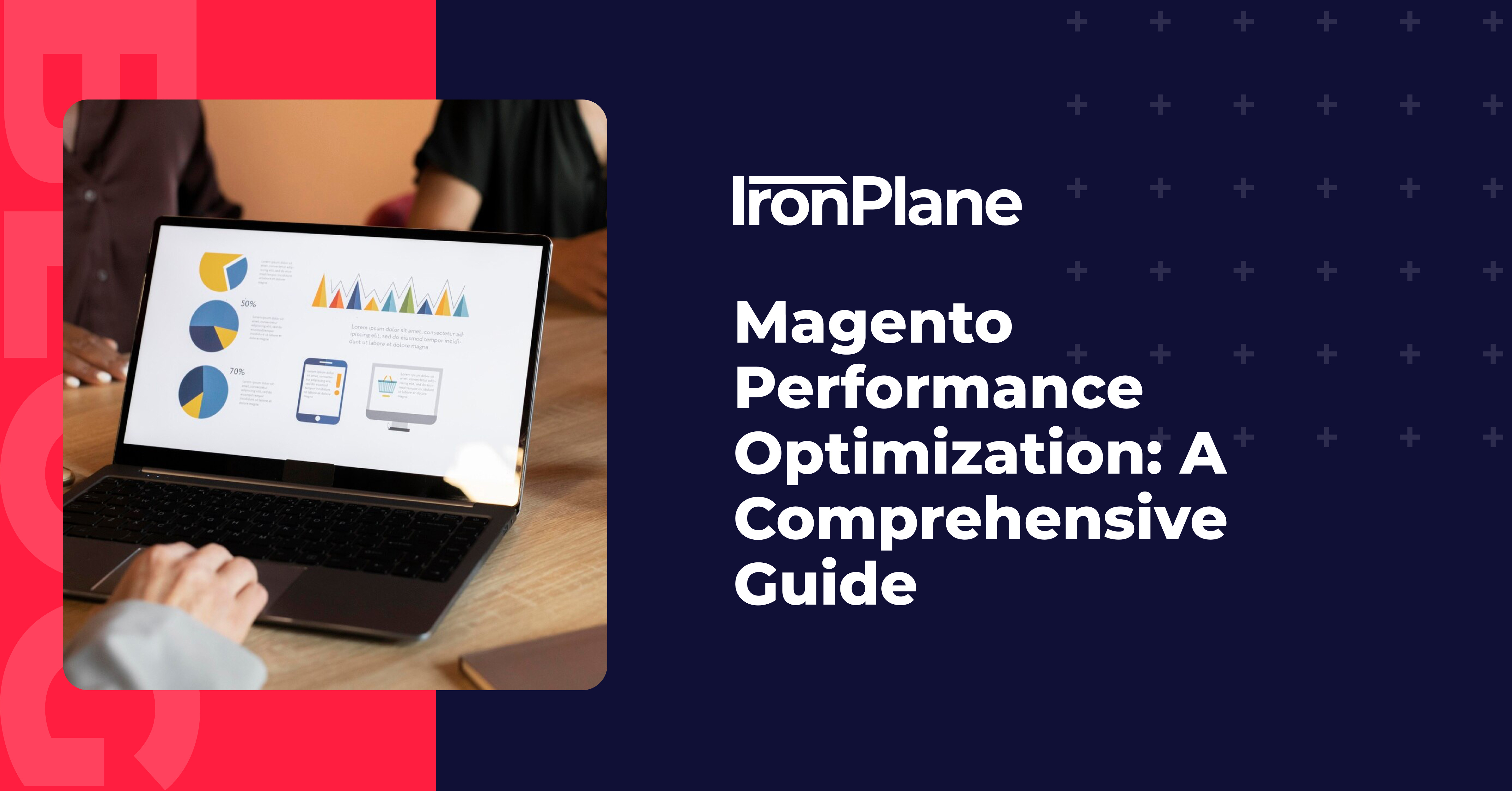A Comprehensive Guide to Magento 2 Requirements
Make sure you meet all Magento 2 requirements in this comprehensive guide from our team of Magento experts.

Welcome to our guide on Magento Performance Optimization. If you're running an online store using Magento, you know how important speed is for your success. Let's explore how to make your store faster, which can improve user experience and increase your sales.
Did you know that 40% of users will leave a website if it takes more than 3 seconds to load? Even worse, 47% won't wait more than 2 seconds. For online stores, slow loading times can be really bad. With shopping cart abandonment rates over 70% for desktop and 80% for mobile, it's clear that speed is super important in online shopping. A fast-loading Magento store not only makes users happy but also helps your store show up better in search results, get more sales, and make more money.

Before we start making things faster, it's important to know how fast your store is right now. You can use tools like Google PageSpeed Insights to check your site's speed. Look at things like Time to First Byte (TTFB), Largest Contentful Paint (LCP), First Input Delay (FID), and Cumulative Layout Shift (CLS). These will tell you where your site needs to get better. You can also use tools like New Relic or Blackfire.io to look deeper into what might be slowing down your store.

Where your Magento store is hosted can make a big difference in how fast it is. Choose a good hosting company that knows how to handle Magento stores. Make sure you're using the latest version of Magento and PHP to get the best speed. Also, think about using HTTP/2 to load static files faster. When setting up your server, make sure you have enough memory and processing power to handle your store's visitors. Set up your PHP settings to work better, like increasing the memory_limit and max_execution_time. You might want to use Nginx as your web server because it's known for being fast and not using too many resources.

Caching is really helpful for making Magento faster. Turn on full-page cache to save HTML responses and skip processing on the back-end. Use Varnish for full-page caching instead of files, because it's much faster. Don't forget about Redis for backend caching - it's a lot faster than the normal Magento caching. Use browser caching for static assets to reduce the number of requests. You might want to use a caching plugin like Litespeed Cache or FPC Warmer to make your caching even better. Remember to clear and warm up your cache regularly to keep things running smoothly.

Your database is really important for your store's speed. Turn on flat catalogs to put all product information in one table, which makes searches faster. Set indexers to "Update on Schedule" mode to avoid using too many resources during busy times. Don't forget to take care of your database regularly to keep things running smoothly. This includes optimizing tables, removing unnecessary data, and making sure everything is indexed properly. You might want to use tools like MySQLTuner to make your database setup better. If you have a lot of products, think about using a search engine like Elasticsearch to take some of the load off your database.

The front-end of your Magento store is what your customers see and interact with. Make your CSS and JavaScript files smaller and bundle them together to make them download faster. Make your images smaller and use lazy loading so they don't slow down your page. Think about using a Content Delivery Network (CDN) to deliver your static content faster to users around the world. Use critical CSS to make sure the top part of your page loads quickly. Use modern image formats like WebP for better compression without losing quality. You might want to make your store a Progressive Web App (PWA) for even faster loading times and a better experience on mobile devices.

A fast, good search function can really improve your users' experience. Use Elasticsearch for catalog pages and search results to make these important parts of your store faster. Take time to make your catalog and search pages work better and be easier to use. Set up Elasticsearch properly, including adding synonyms and stopwords for more accurate results. Think about adding autocomplete and search suggestions to help users find products more quickly. Regularly look at your search logs to see what people are searching for and make your product data better based on that.
.png)
If you want to make your Magento store even faster, you might want to use Progressive Web App (PWA) technology. PWAs can load two to four times faster than normal websites and have been shown to increase sales by 33%. The Hyva theme is another advanced option that can make your store much faster. It uses Alpine.js and TailwindCSS to make the front-end leaner and faster. Think about using GraphQL for more efficient API calls, especially if you're building a headless Magento store. Use tools like Blackfire.io or New Relic to look deep into your store's performance and find and fix any slow parts in your code.
Making your store faster isn't something you do once and forget about - you need to keep working on it. Regularly test and watch your Magento store's performance using tools like Google PageSpeed Insights, GTmetrix, and Pingdom. Keep an eye on how quickly your server responds and look for ways to make it better. Remember, a well-maintained Magento store is a fast Magento store. Set up automatic performance monitoring and alerts to catch problems before they affect your customers. Regularly check your server logs for errors or slow queries that might be slowing things down. Keep your Magento installation, themes, and extensions up to date to get the latest speed improvements.

Sometimes, making a Magento store faster can be complicated, especially if you have a lot of custom features or are having trouble updating to newer versions. In these cases, it might be worth getting help from professionals who specialize in making Magento stores faster. Experts can help you find and fix speed problems, making sure your store runs as fast as possible. They can look closely at your code, make your database structure better, and set up advanced caching strategies. Professional services can also help with tricky tasks like moving to newer Magento versions or setting up headless architectures for better performance.

Making Magento faster is something you need to keep working on, not something you do once and forget about. By using the strategies we've talked about - from choosing the right hosting to using advanced caching techniques - you can make your store much faster. Remember, a faster store means happier customers, more sales, and more money for your business. Keep working on making your store faster, keep testing, and watch your Magento store do better!
If you need expert help with your Magento store, feel free to contact us. We're here to help you make your Magento store the best it can be.

Make sure you meet all Magento 2 requirements in this comprehensive guide from our team of Magento experts.

If you're looking for a good Magento development partner, IronPlane is a great option. They've been working with Magento for over 12 years and have become experts in eCommerce solutions.

Magento has very limited first-party technical support - but partnering with developers or an eCommerce development agency can help your store succeed.